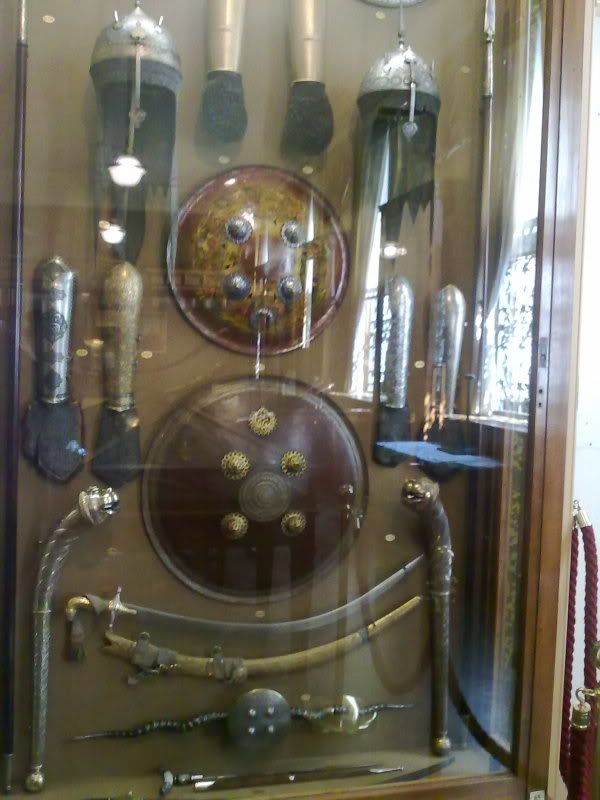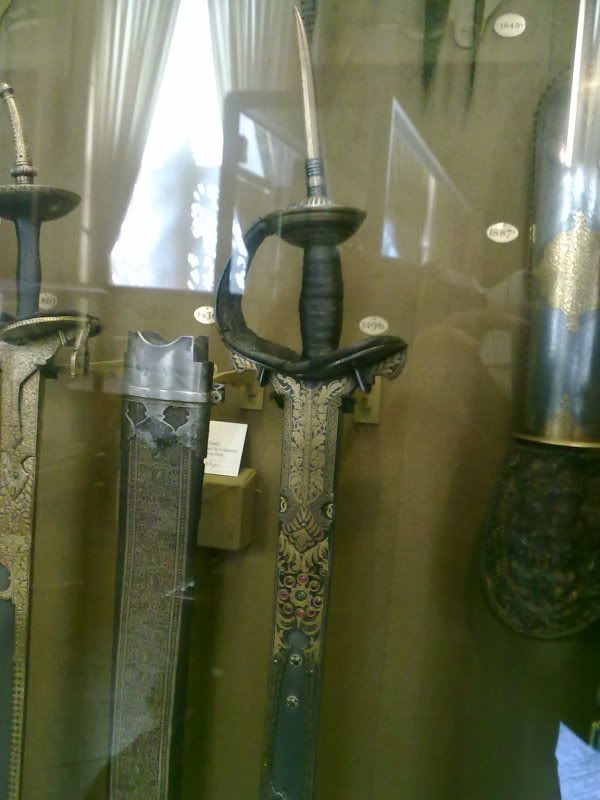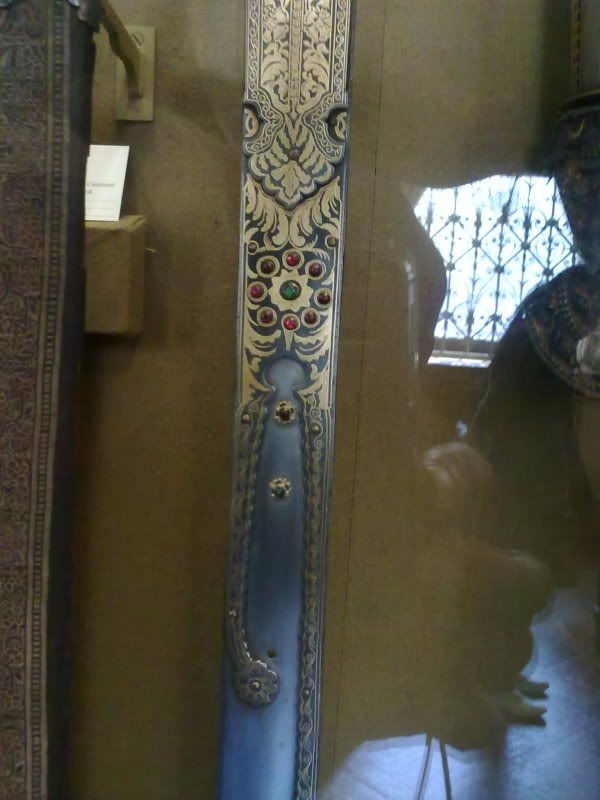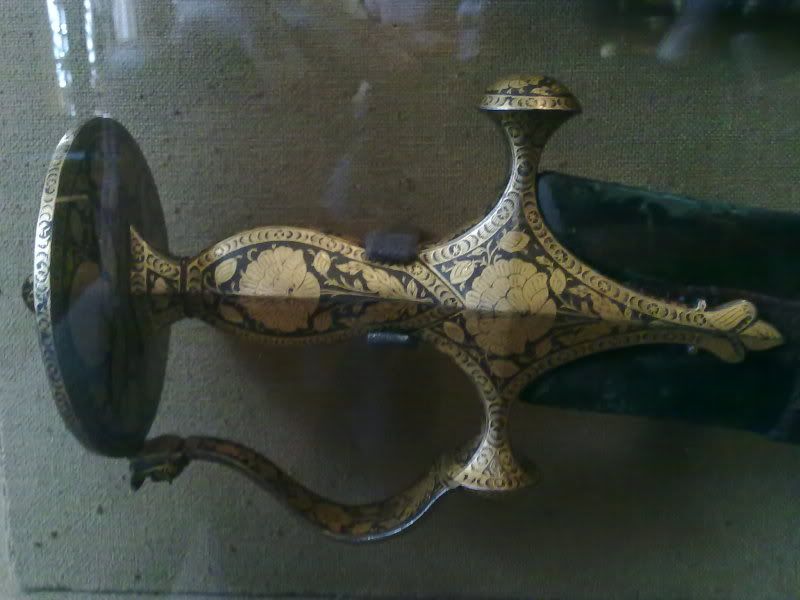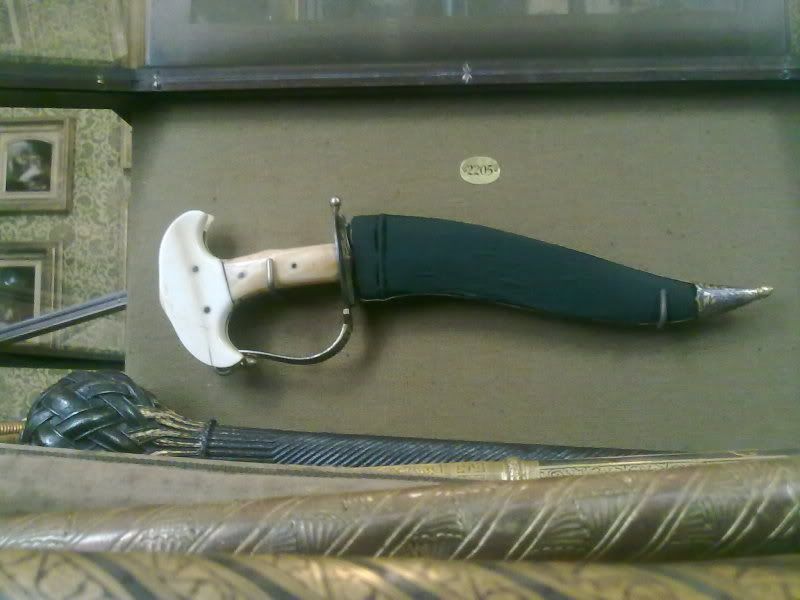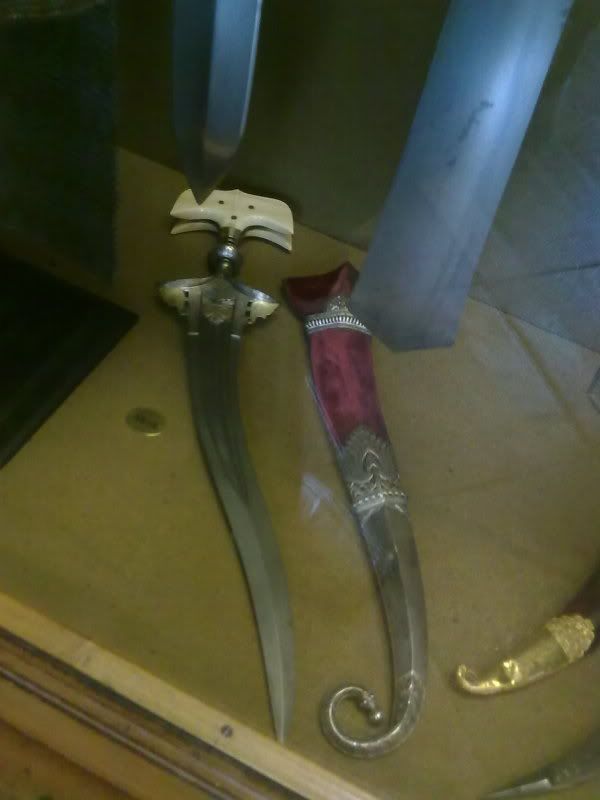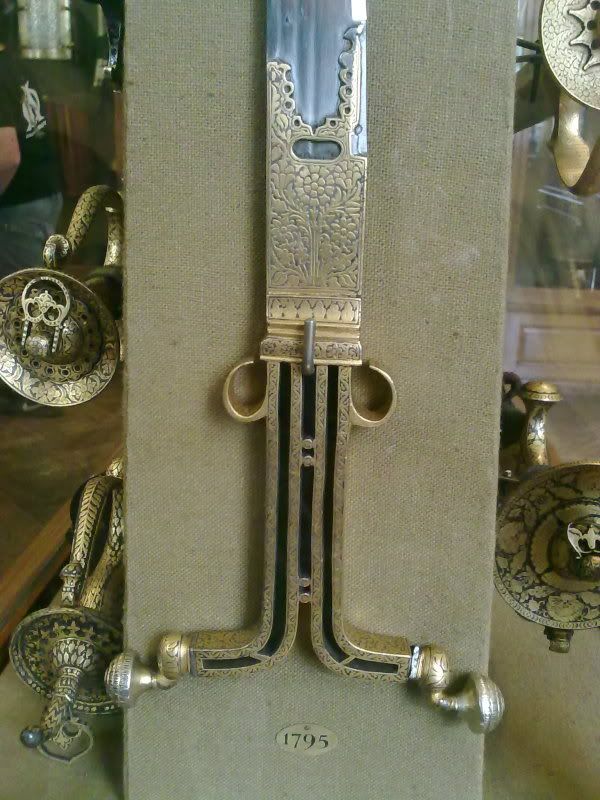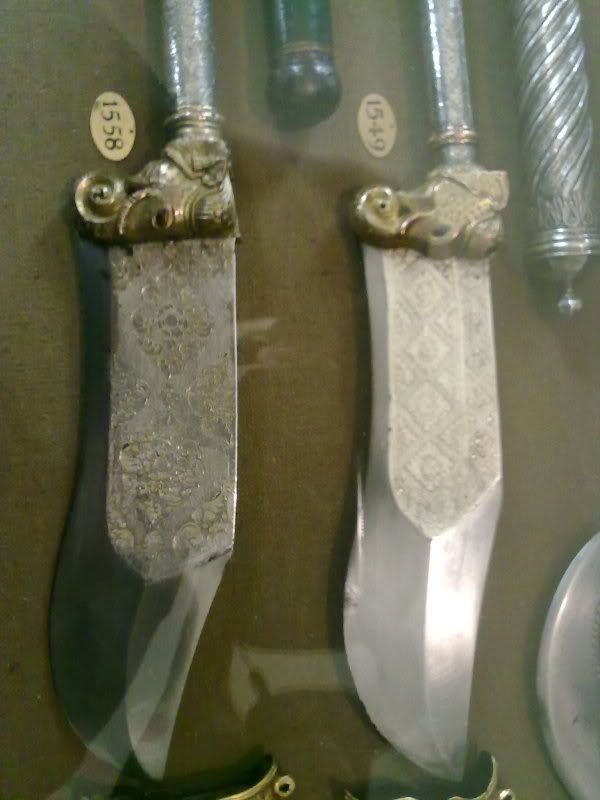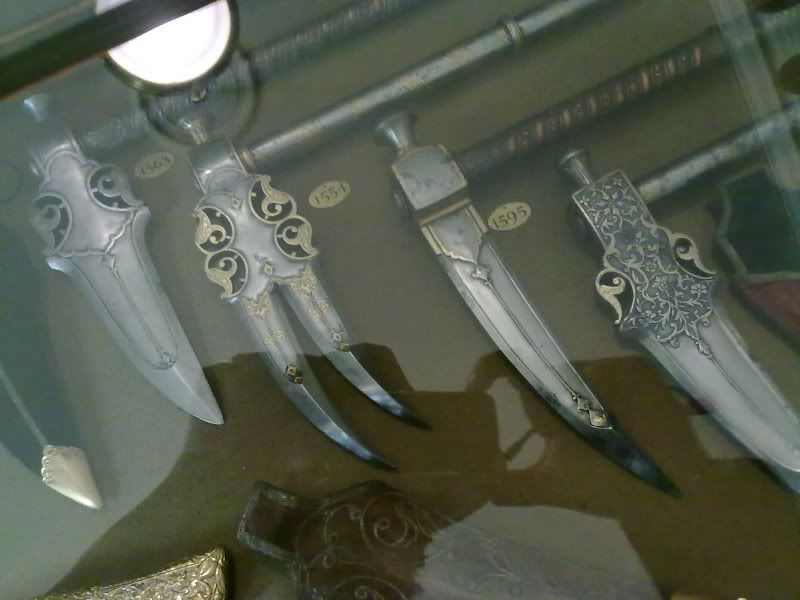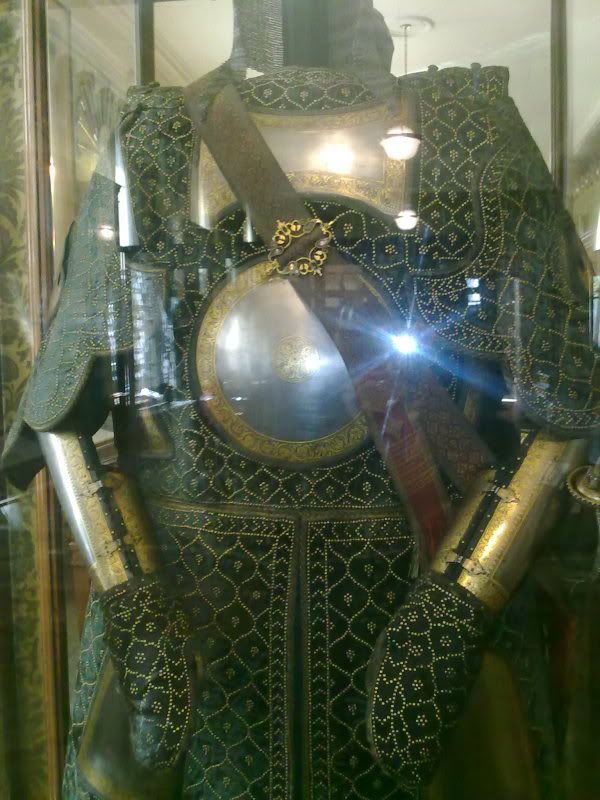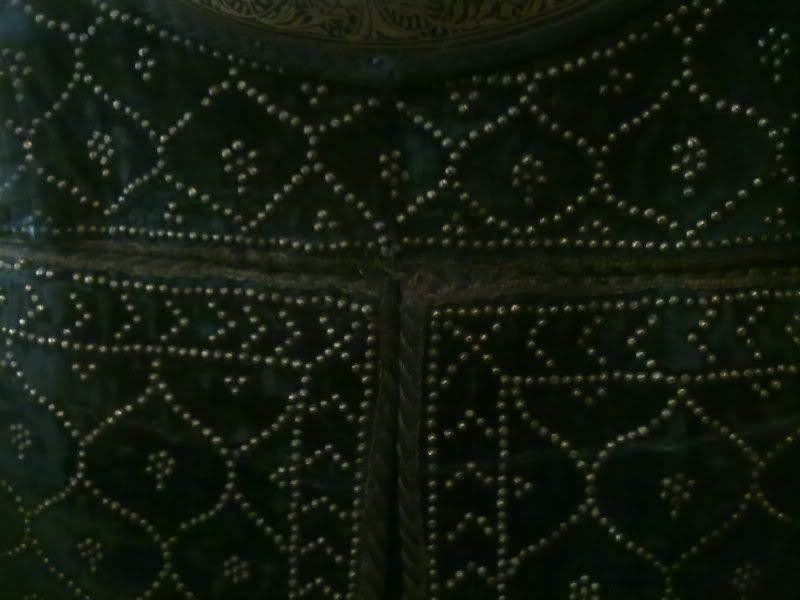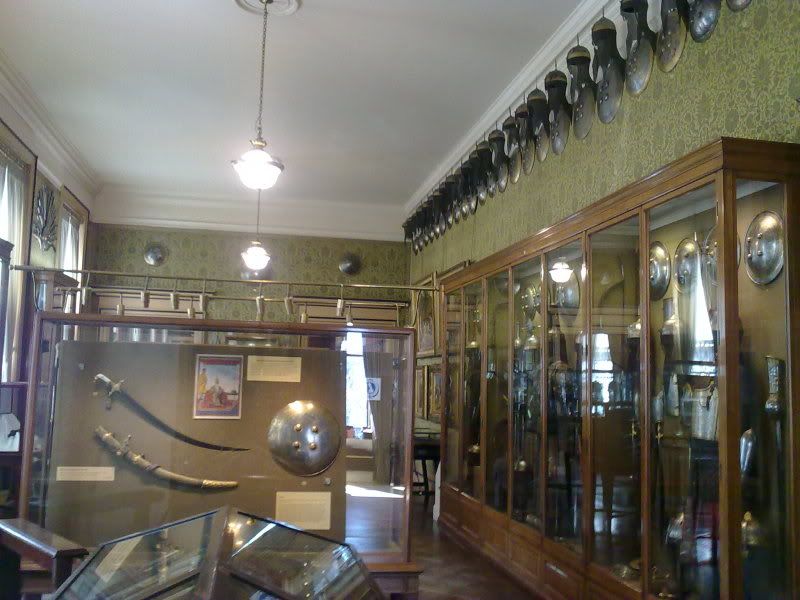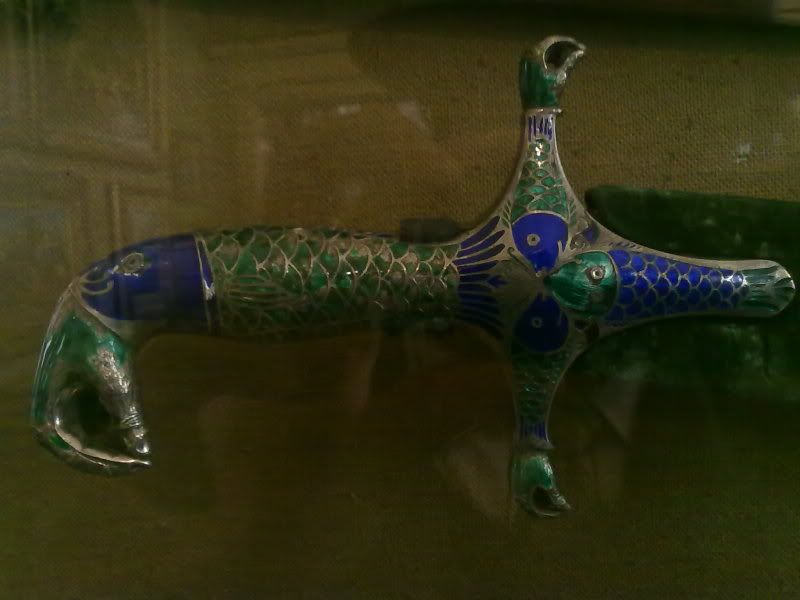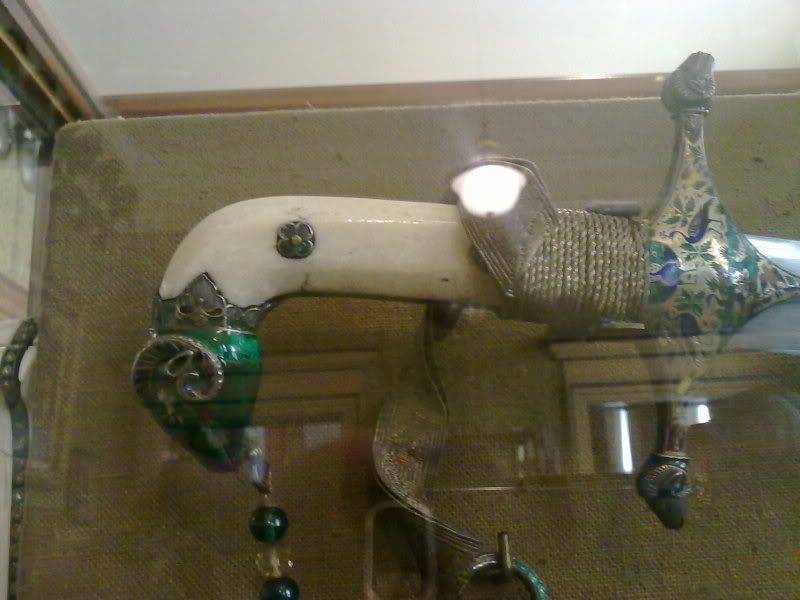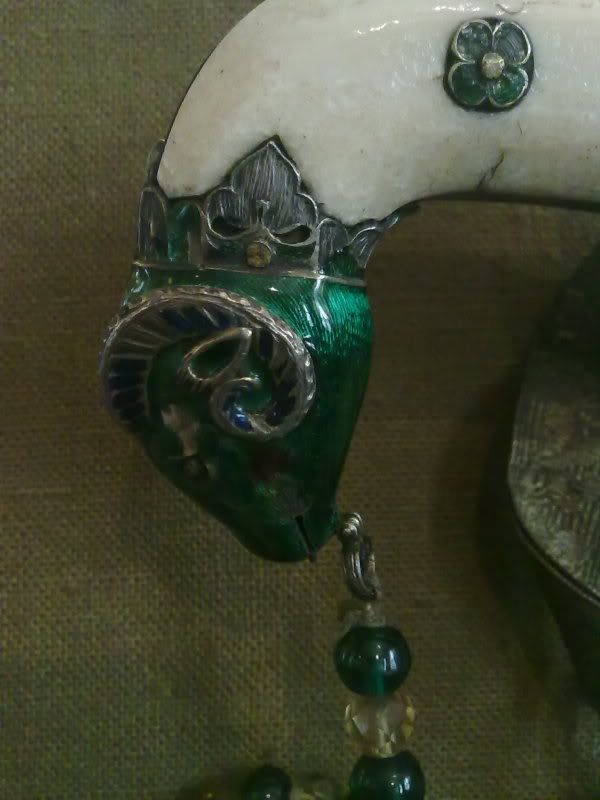visual treat for blade lovers
Posted: Thu Jul 17, 2008 2:45 pm
here is some good news for all people in uk/ visiting london.
im sure that for all our members , there are other places to see other than visiting madam tussads.
vikram has written in detail about those places in detail so i wont go there.
There is however one place in london which is neglected by most tourists.
This is the wallace collection, the largest private collection (museum) in the world, the largest collection of european arms in the world, one of the three largest collection of indian arms in the world (other 2 being V&A museum and towr of london- wallace collection is the only private one).
It is better known for its colllection of paintings, sculptures, objects d' art and antiques but ill limit my article to the indian arms section.
The best- and surprising- part is that despite being private its free. I mean people would be willing to pay money to see the collection.
First let me start with what the tourists are intrested in:
Sword, shield of maharaja ranjit singh ji of punjab.
Sword of tipu sultan (th table in the lower right corner)
Dagger (katar) of emperor Shahjehan. (in the dagger display in lower left corner)
However these three arent the most amazingly beautiful arms there.
There are tulwars, shamshirs, khandas, pattas, khanjars, katar, jambia, chhura, maces, rare weapons like bhuj, maru, the sikh chakra, sosun patta.
The hilts of all these weapons are made from materials ranging from steel to materials like jade, ivory, and even solid gold and have amazing work like encrusting, kundan, meena, koftgiri.
To see what i mean, see the pic and notice how beautifullty even a simple thing like an elephant ankush has been decorated.
The jauhar in the blades was of at least 3 types with beautiful inlay work, relief work, engraving. A few were made by assad ullah.
I just didnt hold my breath, i was actually unable to breathe.
I couldnt obtain the count of the arms (from india) were but i do remember having checked the details in the catalouge for an item no. 2218.
Notice the upper part of the right wall of the gallery. there are enough shields and topes (helmets) to equip a whole platoon.
I also had an oppertunity to see the now rare rajput armour armour 'chitla hazaar maasha' or "coat of a thousand nails" in thich the fabric armor is reinforced with hundreds or thousands of brass rivets to make it strong yet keep it light.
There was also an unusual (for india) steel helmet with horns (like the so called viking helmets they show in movies) and ears.(this was from deccan).
To intrest our other members, there were flintlocks, wheel locks, matchlocks, percussion guns with such amazing inlay and engraving work that one begins to doubt if they are guns or works of beauty made to resemble firearms.
The collection of gunpowder flasks especially the ones mare of cerved staghorn and ivory is mind boggling. Each flask is as- if not more- elaborately carved as marble in ranakpur and delwara jain temples.
I had earlier told the receptionist of my intrest in indian arms so they found me and directed me to a lecture by the curator about european swords (if anyone is intrested, i will write a post about it later).
After the lecture i spoke to him and he was very helpful and friendly.
I pointed out some of the discrepencies in the catalouge , he said the catalouge had been compiled in 1918.
And they had for the first time, recently appointed a curater for the indian section.( who was away to india for some research on swords from hyderabad.)
Though he was extremely helpful and even gave me some published papers about indian arms, my luck had run out at least for the day.
You see photography is not permitted in the museum except for research purposes and the lady who authorises this was away that day and i didnt have an appointment and outline etc of my project so couldnt meet her assistant.
The trust didnt have money to print a picture catalouge (even black and white) it will be out in around 5 years and they were joking that i was young enough to wait that long.
One book that had a few pics from the collection was sold out.
The head of armouries promised to give me photocopies of pics provided i gave him the item number.
I am waiting for the book to be back in stock.
Cant wait to get back to the museum and spend another day there.
If people want i can take pics of pictures in the brochure and post them here.
www.thewallacecollectioncollection.org
im sure that for all our members , there are other places to see other than visiting madam tussads.
vikram has written in detail about those places in detail so i wont go there.
There is however one place in london which is neglected by most tourists.
This is the wallace collection, the largest private collection (museum) in the world, the largest collection of european arms in the world, one of the three largest collection of indian arms in the world (other 2 being V&A museum and towr of london- wallace collection is the only private one).
It is better known for its colllection of paintings, sculptures, objects d' art and antiques but ill limit my article to the indian arms section.
The best- and surprising- part is that despite being private its free. I mean people would be willing to pay money to see the collection.
First let me start with what the tourists are intrested in:
Sword, shield of maharaja ranjit singh ji of punjab.
Sword of tipu sultan (th table in the lower right corner)
Dagger (katar) of emperor Shahjehan. (in the dagger display in lower left corner)
However these three arent the most amazingly beautiful arms there.
There are tulwars, shamshirs, khandas, pattas, khanjars, katar, jambia, chhura, maces, rare weapons like bhuj, maru, the sikh chakra, sosun patta.
The hilts of all these weapons are made from materials ranging from steel to materials like jade, ivory, and even solid gold and have amazing work like encrusting, kundan, meena, koftgiri.
To see what i mean, see the pic and notice how beautifullty even a simple thing like an elephant ankush has been decorated.
The jauhar in the blades was of at least 3 types with beautiful inlay work, relief work, engraving. A few were made by assad ullah.
I just didnt hold my breath, i was actually unable to breathe.
I couldnt obtain the count of the arms (from india) were but i do remember having checked the details in the catalouge for an item no. 2218.
Notice the upper part of the right wall of the gallery. there are enough shields and topes (helmets) to equip a whole platoon.
I also had an oppertunity to see the now rare rajput armour armour 'chitla hazaar maasha' or "coat of a thousand nails" in thich the fabric armor is reinforced with hundreds or thousands of brass rivets to make it strong yet keep it light.
There was also an unusual (for india) steel helmet with horns (like the so called viking helmets they show in movies) and ears.(this was from deccan).
To intrest our other members, there were flintlocks, wheel locks, matchlocks, percussion guns with such amazing inlay and engraving work that one begins to doubt if they are guns or works of beauty made to resemble firearms.
The collection of gunpowder flasks especially the ones mare of cerved staghorn and ivory is mind boggling. Each flask is as- if not more- elaborately carved as marble in ranakpur and delwara jain temples.
I had earlier told the receptionist of my intrest in indian arms so they found me and directed me to a lecture by the curator about european swords (if anyone is intrested, i will write a post about it later).
After the lecture i spoke to him and he was very helpful and friendly.
I pointed out some of the discrepencies in the catalouge , he said the catalouge had been compiled in 1918.
And they had for the first time, recently appointed a curater for the indian section.( who was away to india for some research on swords from hyderabad.)
Though he was extremely helpful and even gave me some published papers about indian arms, my luck had run out at least for the day.
You see photography is not permitted in the museum except for research purposes and the lady who authorises this was away that day and i didnt have an appointment and outline etc of my project so couldnt meet her assistant.
The trust didnt have money to print a picture catalouge (even black and white) it will be out in around 5 years and they were joking that i was young enough to wait that long.
One book that had a few pics from the collection was sold out.
The head of armouries promised to give me photocopies of pics provided i gave him the item number.
I am waiting for the book to be back in stock.
Cant wait to get back to the museum and spend another day there.
If people want i can take pics of pictures in the brochure and post them here.
www.thewallacecollectioncollection.org

